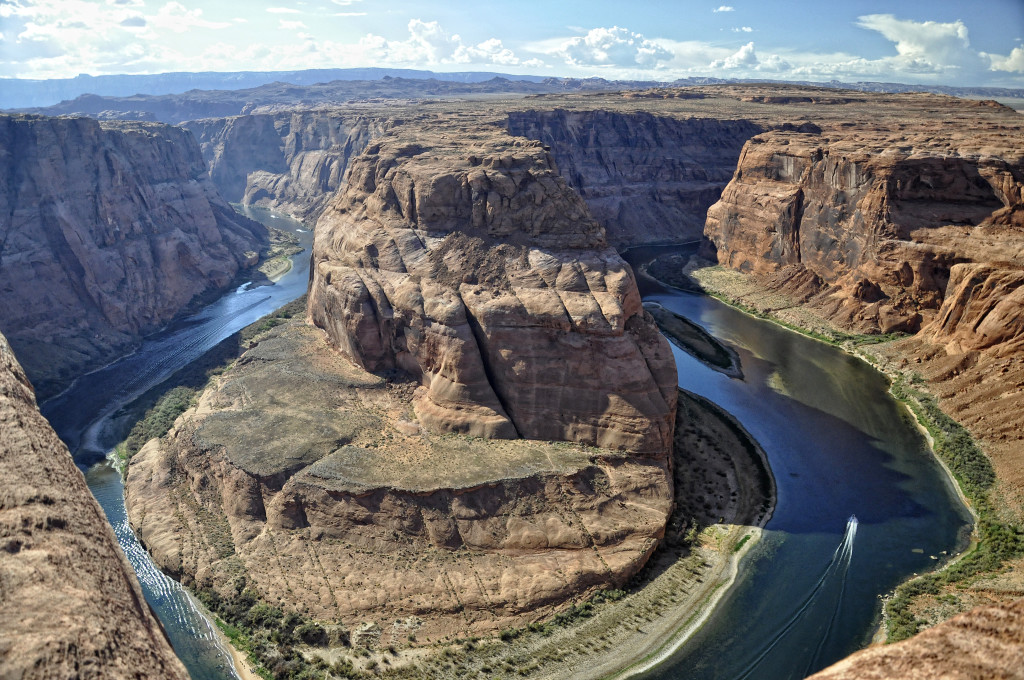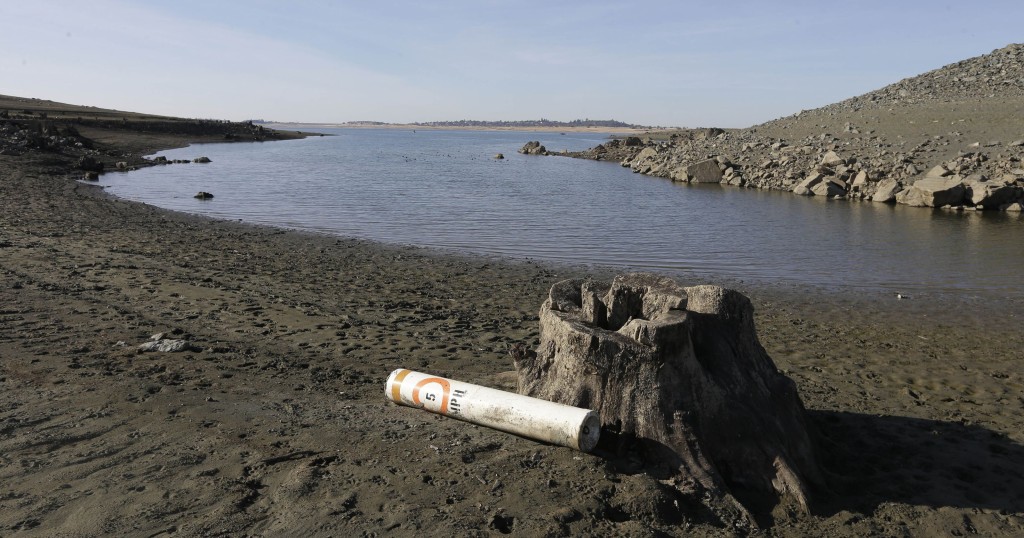Grants to help fund water wells in 10 Alabama counties

A national nonprofit group says grant money will help provide loans to increase the amount of safe drinking water that’s available in 10 Alabama counties. The North Carolina-based Water Well Trust says it has received a $300,000 federal Agriculture Department grant that will fund new and improved wells for rural households. Combined with matching funds from the Water Systems Council, the money will be available in Bullock, Barbour, Dallas, Hale, Lowndes, Macon, Montgomery, Perry, Pike and Wilcox counties. A statement from the group says the grant money will provide low-interest loans of as much as $11,000 per household. The money is for homeowners who don’t have access to a public water system. Prospective applicants can apply online or get an application form from Water Well Trust website. Republished with the permission of the Associated Press.
What they’re saying: Alabama reactions to Trump’s new water proposal

When President Donald Trump took office, he began a process to remove and replace what he deemed to be regulatory burdens put in place by the Obama Administration. One of those rules he endeavored to change was Obama Administration’s 2015 Waters of the United States rule and on Tuesday the Environmental Protection Agency (EPA) and the Department of the Army presented a new proposal to do just that. Under the proposal, federally regulated areas include traditional navigable waters, tributaries to those waters, some ditches, certain lakes and ponds, impoundments of jurisdictional waters, and wetlands adjacent to jurisdictional waters. The proposal also details non-waters of the U.S., such as areas that only contain water during or in response to rainfall; many ditches, including most roadside or farm ditches; prior converted cropland; stormwater control features; and waste treatment systems. “Our proposal would replace the Obama EPA’s 2015 definition with one that respects the limits of the Clean Water Act and provides states and landowners the certainty they need to manage their natural resources and grow local economies,” said EPA Acting Administrator Andrew Wheeler. “For the first time, we are clearly defining the difference between federally protected waterways and state protected waterways. Our simpler and clearer definition would help landowners understand whether a project on their property will require a federal permit or not, without spending thousands of dollars on engineering and legal professionals.” The agencies’ proposal is the second step in a two-step process to review and revise the definition of “waters of the United States” consistent with President Trump’s February 2017 Executive Order entitled “Restoring the Rule of Law, Federalism, and Economic Growth by Reviewing the ‘Waters of the United States’ Rule.” The Executive Order states that it is in the national interest to ensure that the nation’s navigable waters are kept free from pollution, while at the same time promoting economic growth, minimizing regulatory uncertainty, and showing due regard for the roles of Congress and the states under the Constitution. Here’s what Alabama politicians and groups are saying about the proposed rule: Attorney General Steve Marshall: I applaud the Environmental Protection Agency for the release of a commonsense approach to the protection of America’s waterways. The new EPA Waters of the United States definition clearly delineates whether a waterway is covered by the federal government, thus simplifying the process for landowners in seeking permits for use of their property. This new definition will be especially welcome to our farmers, timberland owners and others who use land for commercial purposes and who were unfairly targeted under the old Obama administration Waters of the United States rule. Alabama Farmers Federation President Jimmy Parnell: The proposed rule is good news for Alabama farmers and restores common sense to Clean Water Act enforcement. For several years, farmers, businesses and homeowners have lived under the threat of government intrusion and costly penalties due to overaggressive actions of the Obama-era EPA. We appreciate the Trump administration, current EPA administration, Alabama’s congressional delegation and our state attorneys general for standing by farmers and landowners as we’ve fought back against the WOTUS rule. Alabama Agriculture Commissioner John McMillan: This user-friendly amendment will restore landowners rights. The prior rule greatly expanded Washington’s control over local land use. These necessary changes will assist landowners in understanding whether a project needs federal permits, thus saving our producers both time and money. Alabama Rivers Alliance: BREAKING: The Trump Administration just dropped a rule aiming to gut clean water protections which have been in place for generations. Alabama 1st District U.S. Rep. Bradley Byrne: Farmers who depend on the land and fresh water to do their jobs deserve policies that protect our environment without placing burdensome and confusing requirements on them. I applaud the Trump Administration for rolling out this new rule. As Alabama Farmers Federation President Jimmy Parnell said: this rule “restores common sense to Clean Water Act enforcement. *This article will be updated as more reactions come in.
Paul Ryan: Aid to address lead in Flint, Mich., water on track

House Speaker Paul Ryan Tuesday promised that a long-delayed aid package to help Flint, Michigan, address its lead-tainted water system is on track to pass into law by the end of the year. The Wisconsin Republican says the $220 million or so aid package will be addressed “one way or the other.” He said he hopes it will pass as part of a popular water projects bill. The Flint aid issue was a major sticking point as Republicans and Democrats battled before Congress recessed for the elections. Ryan, despite earlier reservations that Flint’s water problems are a local issue, has come to support federal help for the impoverished city. Flint’s drinking water became tainted when the city, then under state control, began drawing from the Flint River in 2014 to save money. Regulators failed to ensure the water was treated properly and lead from aging pipes leached into the water supply. As many as 12,000 children have been exposed to lead in water, officials say. “We are going to address Flint,” Ryan said. Ryan also said negotiations are continuing over a stopgap spending measure to keep the government running into the first months of the Trump administration. It now looks as though the measure will extend beyond the March 31 date Ryan originally envisioned, out of deference to the Senate, which is expected to have a full schedule confirming Trump Cabinet appointees and a potential Supreme Court nominee. The stopgap spending bill, said Majority Whip Steve Scalise, R-La., is also likely to contain $2 billion or so in additional flood relief for Louisiana and other states. President Barack Obama has requested $2.6 billion in rebuilding assistance for the Pelican State; Congress passed a $500 million down payment in September, with Louisiana lawmakers pressing for the remainder now. “I’m confident it’s going to be resolved the way that we discussed a few months ago,” Scalise said. The stopgap measure may contain some of the Obama administration’s $11.6 billion request for additional war-related money. Republicans say Obama padded the request with non-defense spending. Republished with permission of the Associated Press.
Water distribution delayed in north Alabama after scare

Officials are delaying plans to distribute bottled water in two north Alabama counties where a utility is warning residents not to drink tap water because of chemical contamination. Fire departments will hand out bottled water in parts of Lawrence and Morgan counties beginning later this week. Plans to distribute water starting Monday were pushed back because of a delivery delay. The West Morgan-East Limestone Water and Sewer Authority warned residents last week not to drink their tap water. The authority issued the warning about two chemicals in water from the Tennessee River. The Environmental Protection Agency recently tightened its standards for the chemicals, resulting in the change. The authority’s warning goes further than guidance from the EPA, and the state says there’s no water crisis in the area. Republished with permission of The Associated Press.
Daniel Sutter: Water worries

Decades of political management of our nation’s water resources are exacerbating the impacts of California’s ongoing drought. Government control of water has imposed an enormous economic and environmental burden. The Colorado River, the Salton Sea, the Pacific salmon, and low flush toilets illustrate this folly. Our water policy emerges from municipal systems and irrigation districts, which deliver water to households and agriculture, and state governments and the U.S. Department of the Interior, which set the legal and policy framework. Our water policy, I think, has tried to prevent the availability or price of water from slowing economic development. This has been true even in arid and desert areas of the western U.S. To see the consequences, let’s start with the Colorado River, which carved out the Grand Canyon. The Colorado is a major source of water for the West. The river literally gives everything it has: since the early 1990s, the Colorado no longer reaches the Gulf of California. Southern California’s Imperial Valley was a desert until a canal brought water from the Colorado River. Faulty flood gates at the head of the canal failed during a 1905 flood, diverting the Colorado into the Imperial Valley for nearly two years. The resulting inundation formed the Salton Sea. The Federal government then built the All American Canal in the 1930s. As has been typical of Federal projects, farmers paid a fraction of the government’s cost for the water. Agriculture has flourished in the Imperial Valley, because farmers use subsidized water to grow crops. One might think that water would be used carefully when irrigating the desert. But the low price eliminates farmers’ incentive to conserve water, resulting in the use of wasteful methods like flood irrigation and unlined ditches. One third of the water diverted from the Colorado River has merely run off, sustaining the Salton Sea for a century. The Federal government has built dams to generate electricity, ensure reliable water supplies, control floods, and enhance outdoor recreation. Yet political forces, not environmental or economic concerns, have driven the process. States or communities captured the benefits but passed the cost on to taxpayers nationwide, and formed a powerful constituency for building dams. Meanwhile, dams on the rivers of the Northwest significantly harmed fish like the Pacific salmon, resulting in numerous endangered species listings. Our government-controlled system gives people rights to use but not save or sell water. The lack of a right to sell water drives wasteful irrigation. Farmers would conserve irrigation water even if received for free if they could sell the water to cities. The problem of use-only rights extends to aquifers, or underground pools of water. Our nation’s largest aquifer, the Ogallala, stretches from Texas to the Dakotas. The aquifer is no 30% depleted, and in some areas the water table has fallen 200 feet. At least 20% of the farmland irrigated by the Ogallala may run out of water within thirty years. Because low prices do not give households the proper incentive to conserve water, politicians restrict our water use. The most visible restrictions are imposed during droughts, as currently in California. Less visibly, water conservation is built into many consumer products, like the Department of Energy’s limitation of residential toilets to 1.6 gallons per flush. Market prices let people make decisions tailored to their likes and dislikes. People can use lots of water if they want, but they will have to pay for it. The enormous costs of our politicized system should surprise no professional in the public policy world. Economists like Ludwig von Mises and Friedrich Hayek explained why government officials cannot match markets in satisfying the likes and dislikes of consumers. State and federal bureaucrats must decide what constitutes beneficial use of water, but this is impossible unless people can make purchases at prices reflecting supply and demand. Political control over water has produced a sea in the California desert, endangered fish populations, and rapid depletion of our nation’s aquifers. Our water policy has been a train wreck, and restricted our personal freedom to boot. Fortunately property rights and voluntary exchange can improve our situation if given the opportunity. Daniel Sutter is the Charles G. Koch Professor of Economics with the Manuel H. Johnson Center for Political Economy at Troy University and host of Econversations on TrojanVision
Daniel Sutter: How to Turn a Drought into a Disaster

California is in the midst of a severe, protracted drought that is producing significant costs and conflicts. The unreported story, however, is how our politicized system of water allocation exacerbates these impacts. The costs of politicized water extend across the nation. Californians are using cell phone cameras and social media to report violators of water use restrictions. Actor Tom Selleck, for instance, was accused of stealing water for his avocados. It turned out that Magnum, P.I., was paying for the water he was taking from a fire hydrant. The main conflict in California pits farmers against other users. Water has many uses beyond watering crops and lawns and filling swimming pools. The computers powering the internet generate lots of heat, and Google uses chilled water to cool its servers. Electricity generation requires considerable water, not just for hydroelectric power, but also when using coal and nuclear power: electricity for a 60 watt lightbulb for a year requires 3,000 to 6,000 gallons of water. Ethanol requires four gallons just to refine one gallon, in addition to growing the corn. Our nation’s water problems, including the conflict news stories describe, result in large part from a failure to use property rights, voluntary exchange, and prices to allocate water. California’s drought is Mother Nature’s doing, but the economic costs and political conflict are largely on us. Farmers have water rights, but not full property rights. They can divert water but only to use it for irrigation. Farmers’ rights to use water can be suspended if river levels fall too low, as determined by bureaucrats. Without water for irrigation, farmers’ crops will fail. Farmers cannot trade (sell) water that they could use for irrigation to Tom Selleck for his avocados or Google for their server farms. A bureaucrat decides what happens to the water, and the result is conflict. Competition for water results because resources are scarce. Scarcity means that our wants and desires exceed our ability to produce goods and services. Economists often praise markets and prices for directing scarce resources to their most highly valued uses, which we call efficiency. Although markets cannot eliminate scarcity, they structure interaction to focus on cooperation and minimize conflict. Consider how the allocation of water contrasts with homes. California is home to some of the nation’s priciest communities, including Malibu on the Pacific Ocean. Homes in Malibu are in great demand, but can be bought and sold. Actor Jeff Bridges recently listed his estate for $29 million, to effectively let someone else get to live in Malibu. But Mr. Bridges will probably be happy if his home sells for the list price, in contrast with the farmers who might lose their water and get nothing in exchange. Such politicized allocation is the norm across the U.S. The city of Troy charges for water, but at a price determined by politicians and not markets. And communities employ orders to reduce water use. Troy currently has a voluntary odd-even lawn watering restriction in place. Such restrictions ramp up when drought conditions worsen, eventually becoming bans. A market approach would raise the price and let people decide if they want to pay perhaps $1,500 a month for a green lawn. We use high prices to clear the market for homes in Malibu, where an 800 square foot beachfront house recently sold for $5 million. I was not a bidder. Our system of politicized water allocation has immense costs, which I will discuss further in the future. The potential exists to use voluntary exchange for water. Economists like Terry Anderson of Montana State University and Nobel Prize winner Vernon Smith have described how rights and markets could work for surface and ground water respectively. Indeed, water market innovations designed by Anderson and his colleagues have improved both economic efficiency and environmental protection. Hopefully a weather pattern change will bring California’s current drought to an end soon. But should the drought continue, remember that much of its pain is from politically self-inflicted wounds. Daniel Sutter is the Charles G. Koch Professor of Economics with the Manuel H. Johnson Center for Political Economy at Troy University and host of Econversations on TrojanVision. Respond to him at dsutter@troy.edu and like the Johnson Center on Facebook.


